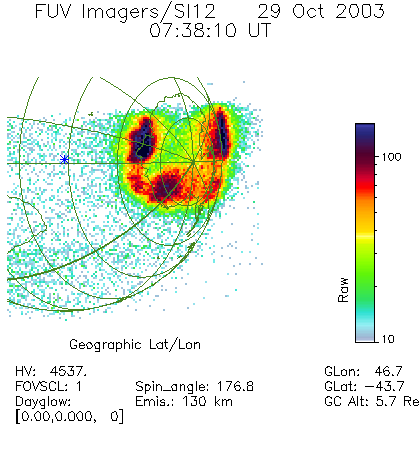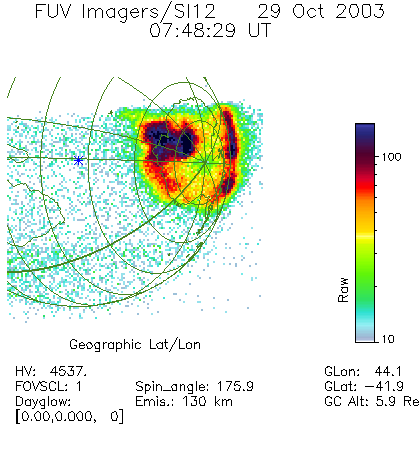


| IMF Southward Proton Aurora |
IMF Northward Proton Aurora |
 |
 |
| Title: | Super storms | |
| Authors: | Bell, J. T.; Gussenhoven, M. S.; Mullen, E. G. | |
| Journal: | Journal of Geophysical Research, Volume 102, Issue A7, July 1, 1997, pp.14189-14198 |
| Title: | Energy characteristics of auroral electron precipitation: A comparison of substorms and pressure pulse related auroral activity | |
| Authors: | Chua, D.; Parks, G.; Brittnacher, M.; Peria, W.; Germany, G.; Spann, J.; Carlson, C. | |
| Journal: | Journal of Geophysical Research, Volume 106, Issue A4, April 1, 2001, pp.5945-5956 |
| Title: | Proton aurora in the cusp during southward IMF | |
| Authors: | Frey, H. U.; Mende, S. B.; Fuselier, S. A.; Immel, T. J.; Østgaard, N. | |
| Journal: | Journal of Geophysical Research Space Physics, Volume 108, Issue A7, pp. SMP 6-1, CiteID 1277, DOI 10.1029/2003JA009861 |
| Title: | Proton aurora in the cusp | |
| Authors: | Frey, H. U.; Mende, S. B.; Immel, T. J.; Fuselier, S. A.; Claflin, E. S.; Gérard, J.-C.; Hubert, B. | |
| Journal: | Journal of Geophysical Research (Space Physics), Volume 107, Issue A7, pp. SMP 2-1, CiteID 1091, DOI 10.1029/2001JA900161 |